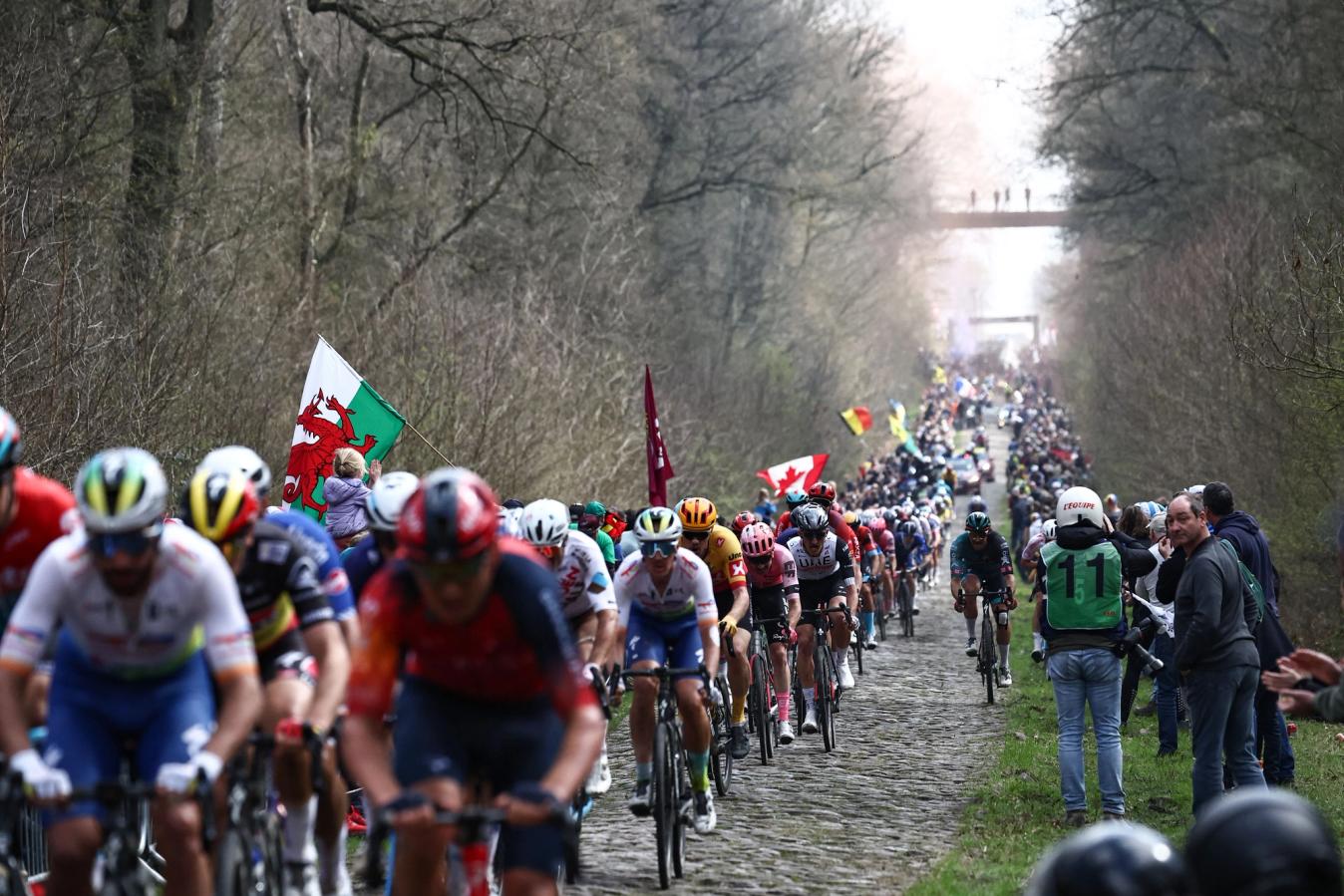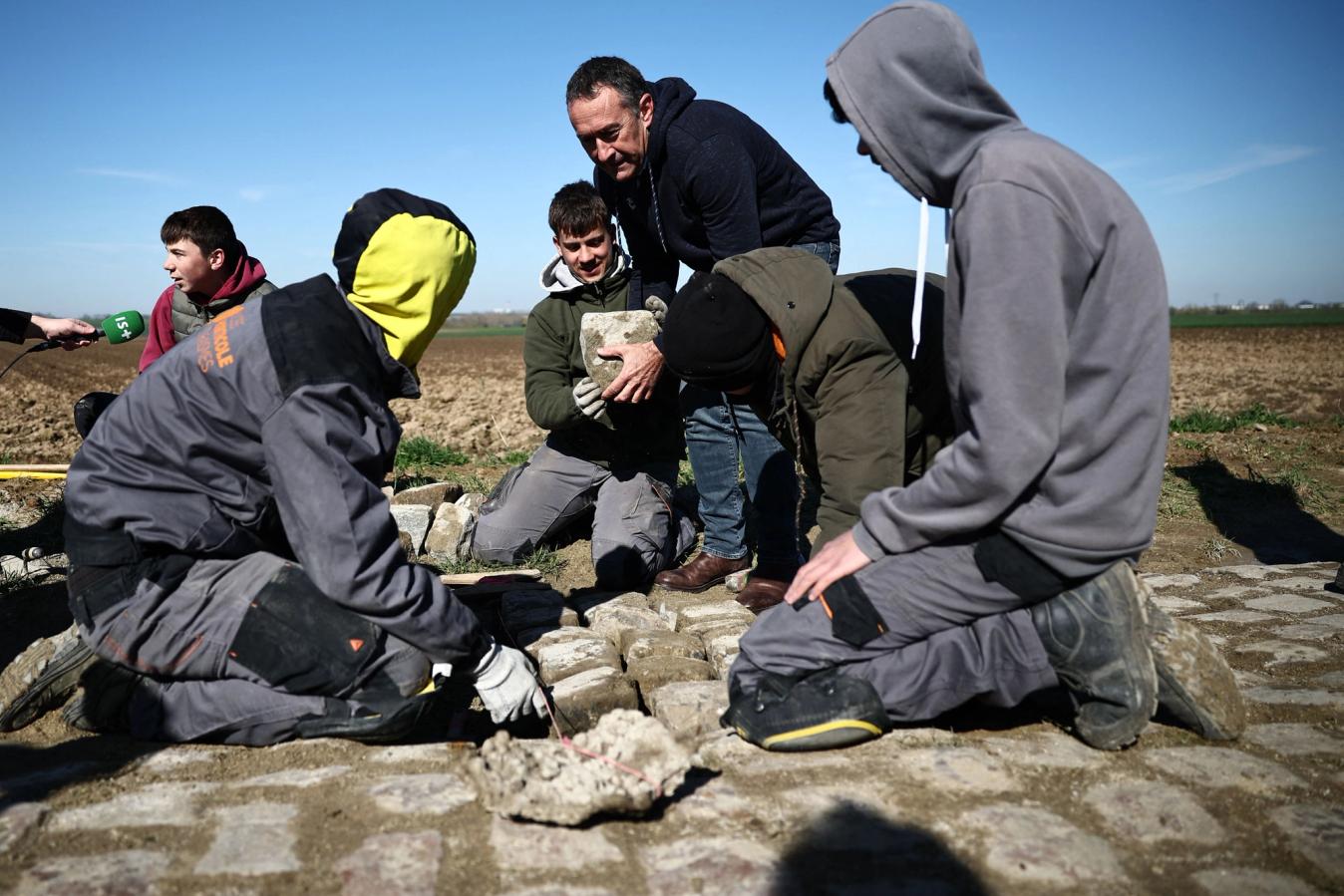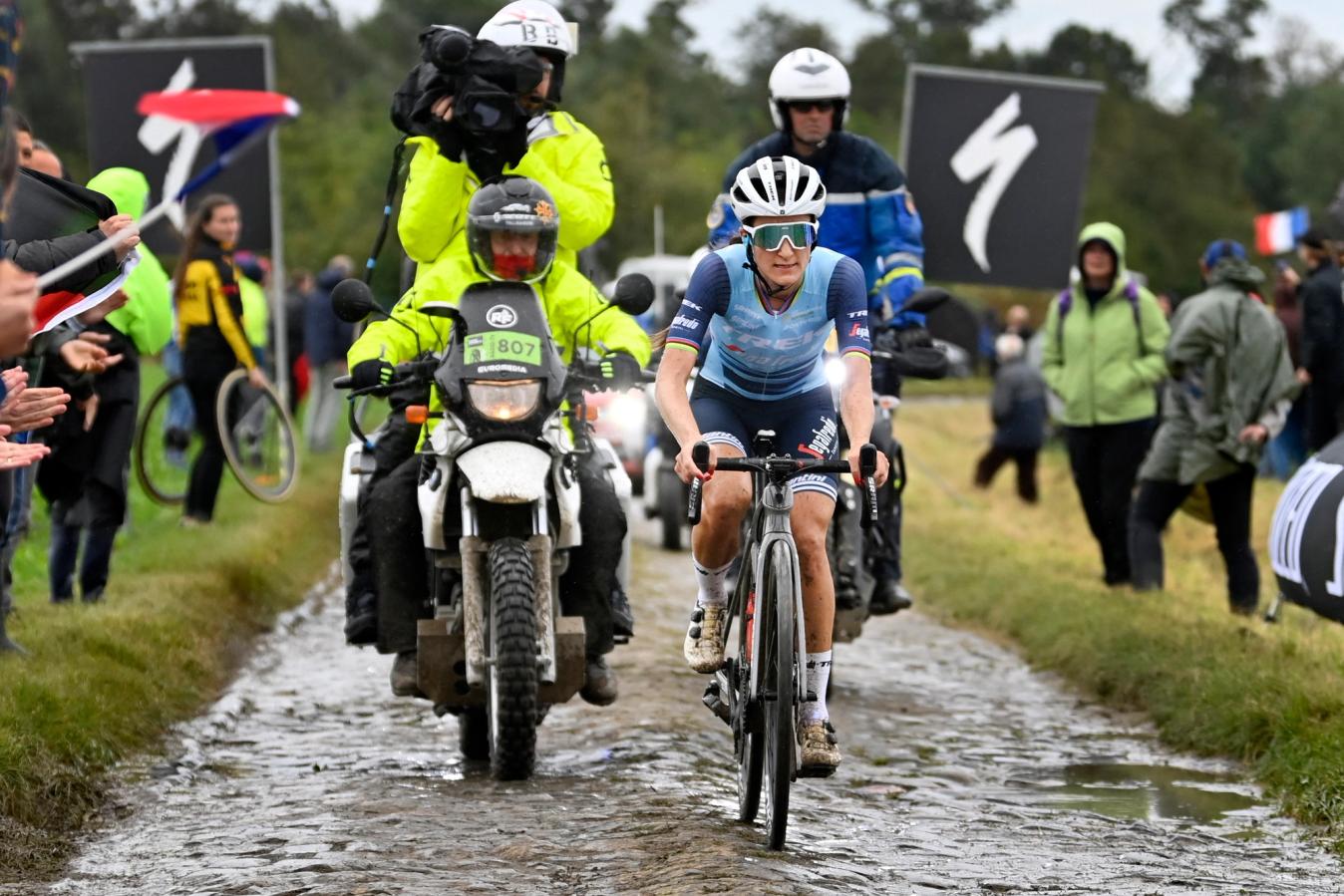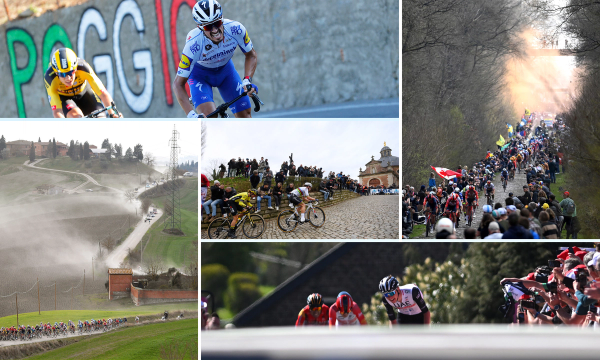Paris-Roubaix: Moments that have defined cycling's most-loved Monument
From cobbled climbs and the discovery of the Trouée d'Arenberg, to staving off a tarmac revolution and Lizzie Deignan's historic victory, this race has seen it all
George Poole
Junior Writer
© Getty Images
Believe it or not, the Trouée d'Arenberg has not always been a feature of Paris-Roubaix
The cobblestones of northern France are what make Paris-Roubaix cycling’s most-loved Monument. Mons-en-Pévèle, Carrefour de L’Arbre, Trouée d'Arenberg… their names roll off the tongue just as easily as Alpe d’Huez, Mont Ventoux and the Zoncolan these days.
But whilst Paris-Roubaix sits as an icon of our sport today, its fate has not always been so set in stone. Over the years, the race has had to grapple with its identity and, under the constant existential threat of the so-called pavé being paved over, has had to adapt and innovate in order to survive.
Here, we recount the history of this journey through four key moments in time – the moments that have made the cobblestones the pièce de résistance of the 'Hell of the North'.
The early days of Mons-en-Pévèle
Imagine Paris-Roubaix without cobbles. It’s impossible, right? But cast your minds back to the 1960s. The future of the race was more uncertain than ever and the pavé was diminishing year on year. The Mons-en-Pévèle sector is an icon of today’s race, but it once saw the threats to the race writ large.
It may come as a surprise, given the modern-day sector lies in the flat open countryside, but the village of Mons-en-Pévèle was once the highpoint of the race. Cobblestone climbs were once a thing in Paris-Roubaix, first appearing in 1955. A climb adjacent to Mons-en-Pévèle, Caouin, featured in 1958 but the cobbled hike to the village itself was introduced in 1966, as one of the race's most fearsome tests.

© Getty Images
Winner of Paris-Roubaix, Felice Gimondi, riding the race three years after his victory
The race organisers plotted a route up the notoriously rough lane known as 'Pas-Roland', and the cobbles instantly made an impact, with Felice Gimondi attacking and reaching the top of the sector alone. He would ride the next 40km solo to win his first and only Paris-Roubaix title, but the Pas-Roland was soon paved over, as was the common treatment for much of the pavé in those days. Felice Gimondi’s victory was a momentous moment for Mons-en-Pévèle, but unfortunately so was the following year’s race.
Read more: Spring Classics 2024: Essential guide to the races and riders
With the Pas-Roland climb paved over, the peloton breezed their way to the cemetery at the top of the hill and the race ended in a sprint of 10 riders in the Roubaix Velodrome, won by Jan Janssen. Race director Jacques Goddet was apoplectic, having seen this once-feared climb reduced to little more than a leg stretcher. The cobbles were disappearing across northern France, and Paris-Roubaix was starting to look like a bunch sprint course.
A change was needed, and a change was on the horizon that would alter the course of Paris-Roubaix history…
A pottery worker, a miner and a Tour de France champion produce a legend
With just 22km of cobbles making their way into the 1965 edition and with the Mons-en-Pévèle’s cobbled climb paved over for 1967, Goddet was under no illusions; the future of Paris-Roubaix was at real risk. The local councils across northern France were desperate to pave over the cobbles in the wake of World War Two and the old route of Paris-Roubaix had quickly become redundant. Goddet sent course designer Albert Bouvet out to find new stretches of pavé, but the major breakthrough would come via a miner and his mother.

© Getty Images
The old mining village of Arenberg is now one of the most iconic locations in all of bike racing
Prior to becoming world road race champion and a Vuelta a España winner, Jean Stablinksi worked underground to prop up wooden supports holding mining tunnels in place. His place of work was the mine under the Forest of Arenberg, overlooked by the lift tower at Compagnie des Mines d’Anzin. While he was underground, Jean’s mother would cycle to work at a local pottery plant through the forest, over a stretch of cobbles that had been laid in the 18th century.
Now entering his final season as a professional rider, Stablinski suggested this stretch of pavé to Bouvet and after much deliberation, Goddet was persuaded to include the Trouée d’Arenberg in the 1968 edition of Paris-Roubaix.
That year’s race would be a defining moment for the history of the cobbles and was a far cry from the 1965 and 1967 editions that had infuriated a dismayed Goddet. 56.5km of the 1968 Paris-Roubaix would be made up of cobblestones, with only 44 of the 136 riders managing to finish the race in Roubaix. It was a special day for Stablinski, he would be welcomed through the Forest of Arenberg by a legion of fans dressed in miners’ outfits to cheer him on. More important for the race, though, was the man who entered the Trouée d’Arenberg alone and in the front of the race.
His name was Roger Pingeon and he was the reigning Tour de France champion, providing an incredible spectacle for all in attendance. Pingeon would not win the race — that honour would go to Eddy Merckx, the World Champion no less. There is no doubt about it: the 1968 Paris-Roubaix was perhaps the most important edition in its history. It set the benchmark for the next half a century and beyond. Indeed, the next six winners of L’Enfer du Nord were solo victors, proving that the race was no longer sliding towards insignificance, but was instead a race to be feared once again.

© Getty Images
Around 10,000 spectators line the Arenberg trench each year
The legend of the Trouée d’Arenberg was set in stone as of the 1984 edition, with the ‘Arenberg trench’ broadcast live on television for the first time and the two leading riders being Gregor Braun and Alain Bondue. Not only were both teammates for a northern French team - La Redoute - but the Roubaix-born Bondue was celebrating his 25th birthday that day. Neither of the pair won – it was to be Sean Kelly’s day – but the live coverage of the Arenberg trench had made a lasting impression.
Read more: We rode cobbles too rough for Paris-Roubaix!
Paris-Roubaix gets by with a little help from its friends
While the introduction of more cobble sectors in the late 60s and 70s helped restore the fearsome reputation of the race, the threats to the race remained and Jacques Goddet could not save the fate of Paris-Roubaix on his own. The cobbles of northern France make this race unique and arguably the greatest bike race in the world, but without the help of a volunteer organisation, the pavé would perhaps be no more.
As Peter Cossins pointed out in his book The Monuments, although Goddet had found new stretches of pavé to include, the paving over of cobblestone tracks continued to happen at an alarming rate and French writer René Fallet issued a warning that ‘The De Vlaemincks of this world are facing the same threat as baby seals.’
Former pro turned journalist Jean-Marie Leblanc regularly wrote warnings about the race’s future and his 1982 book, Les Pavés du Nord, brought the debate onto cycling’s main agenda. The following year, Roubaix enthusiast and a man regularly in contact with Leblanc, Jean-Claude Vallaeys, set up a volunteer organisation known as Les Amis de Paris-Roubaix — the friends of Paris-Roubaix. Their ambitions were two-fold, to protect and preserve the existing cobble sectors, as well as going in search of new cobbles to add to the race.

© Getty Images
Jean-Marie Leblanc would later become the director of ASO’s races, pushing the preservation of the pavé even higher up the list of priorities. Current race director Thierry Gouvenou is pictured helping last year's repairs
Led by president François Doulcier until his passing last year, the group has protected the Forest of Arenberg since 1999 and continues to perform a vital role in de-weeding the Trouée d’Arenberg. Indeed, just like a post-apocalyptic world that you might see in a video game, the Forest of Arenberg is bursting through with vegetation that is threatening to swallow the road whole and make the 2,400m of pavé impassable by bikes.

© Getty Images
The true nature of the cobbles often comes to light in early-season recons
With links to local horticultural colleges such as that in Raismes, Les Amis de Paris-Roubaix rely on the work of volunteers and the donations of those who love this most brutal of races. From a low of 22km of pavé in the 1965 edition, the men’s Paris-Roubaix this year features 55.7km and the success of the race to this very day owes a large gratitude to Les Amis de Paris-Roubaix.
Lizzie Deignan makes history, in more ways than one
For 125 years the women had to wait while the men’s peloton roared over the pavé of Paris-Roubaix each year. For 125 years, the women wondered how they would fare over this rough terrain. And for 125 years, Britain waited for its first winner of Paris-Roubaix. Up stepped Lizzie Deignan and the long-awaited women’s Paris-Roubaix in October 2021, ready to give cycling one of its most entertaining spectacles in decades.
33.9km into the day, the Hornaing sector - otherwise known as the Secteur pavé John Degenkolb - was the first taste of Paris-Roubaix cobbles in the history of the women’s peloton, and it did not fail to inspire. Not only was this a historical moment in its own right, but its tale was written into legend when Deignan attacked off the front of the peloton. In retrospect, we have found out this wasn’t a planned attack, but merely an upping of the pace in front.

© Getty Images
Deignan on her way into the history books
Nevertheless, the Trek-Segafredo rider turned around to see nobody on her wheel across the pavé and so she marched on. She would not be caught over the following 82km and so Deignan’s Hornaing acceleration proved decisive. She had become the first winner of Paris-Roubaix Femmes avec Zwift, the first British winner of Paris-Roubaix in its 125-year history and her winning move had come on the very first sector of the race.
Read more: Lotte Kopecky: I’d rather win Paris-Roubaix than a third Tour of Flanders
From now on, the Secteur pavé John Degenkolb will always be associated with Deignan’s triumph and once again serve as the first sector of this year’s Paris-Roubaix Femmes. With the help of Les Amis de Paris-Roubaix and the long overdue introduction of Paris-Roubaix Femmes, the future of Paris-Roubaix looks bright. It appears that we can look forward to riders suffering on the pavé for generations to come…Vive Paris-Roubaix!
For the latest news, interviews and analysis from the world of professional cycling, be sure to check out the Racing tab on the GCN website and visit our essential guide to The Spring Classics to stay up to date with all of the action from cycling's most exciting season.
Latest Videos
1Why VO2 Max Is The GREATEST Predictor Of Lifespan | Dan's Journey Back to Health and Fitness (Pt. 2)

2The Hottest Bikes & Pro Tech Of The Giro d'Italia 2024

3Your Bike WILL Get Stolen, Unless You Do This! GCN Tech Show 331

46 Bikepacking Essentials You DON'T Want To Forget!

5The Big GCN Giro d’Italia 2024 Preview Show!

.jpg%3Frect%3D0%2C3%2C5568%2C3706%26w%3D1280%26h%3D852%26auto%3Dformat&w=3840&q=90)







